How To Practise Like A Scratch Golfer
Just because you aren't a scratch golfer, it doesn't mean you can't practise like one. Joe Ferguson offers a few ideas on how...
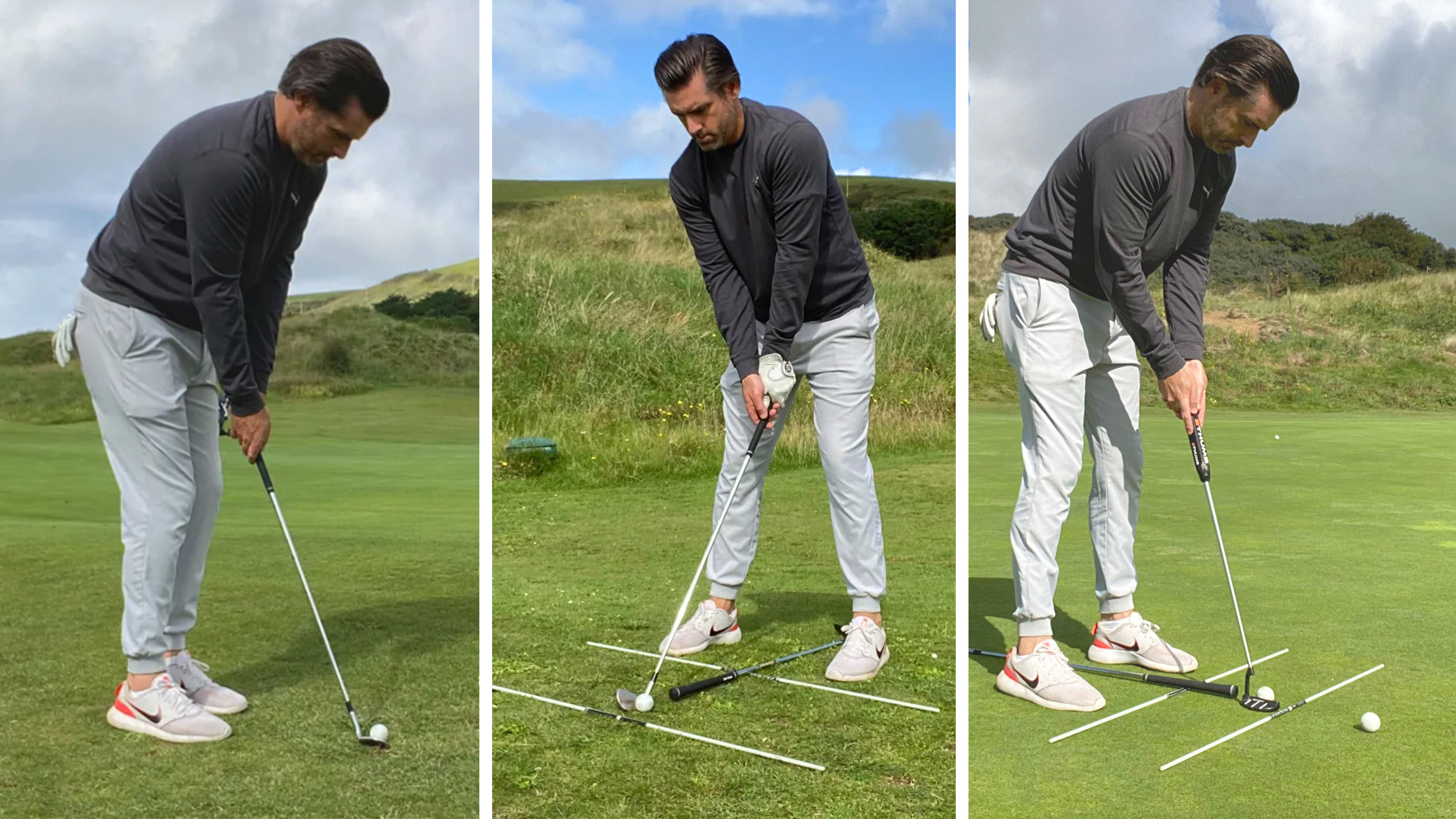

Despite what some will claim, you don’t simply get down to a scratch handicap through ability alone. We all know that there is a direct correlation between practice and improvement, but what can you do to practise golf like a scratch player?
Build Strong Foundations
As golfers, we are often looking for quick fixes, that one lightning bolt that will drop our handicap by ten shots and completely revolutionise our game! Unfortunately, despite what many of today's instagram coaches may claim, such a thing does not exist.
The road to improvement in golf is steadier and more incremental. One of the things that can make the journey a little easier is building good strong basic fundamentals. As un-sexy as it may be, the importance of maintaining your golf grip, posture, ball position and alignment cannot be overstated. In fact, many swing issues can be traced back to one of these four things, whereby a compensation has been made due to one of these fundamentals being off.
You only have to look up and down the range at any PGA Tour event and you will rarely see a player practising without the aid of some alignment sticks. They simply cannot afford to neglect these basics as the consequences can be severe. Scottie Scheffler for example, diligently uses a practice club with a moulded rubber grip to ensure his grip stays constant from week to week, and as one of the most consistent players in the game, this may be a good example to follow. Check out our guide to the best training aids to see what might help your game.
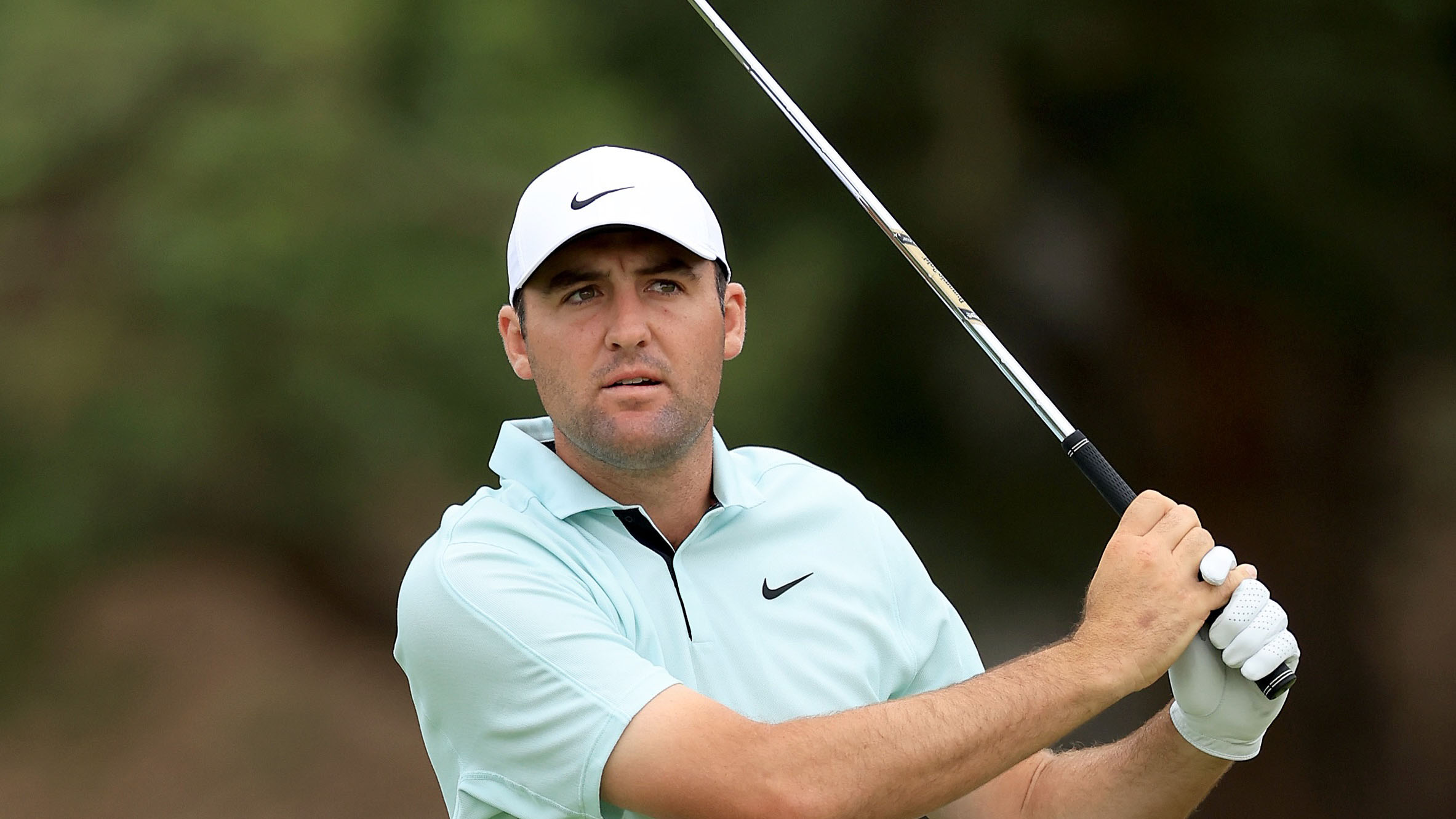
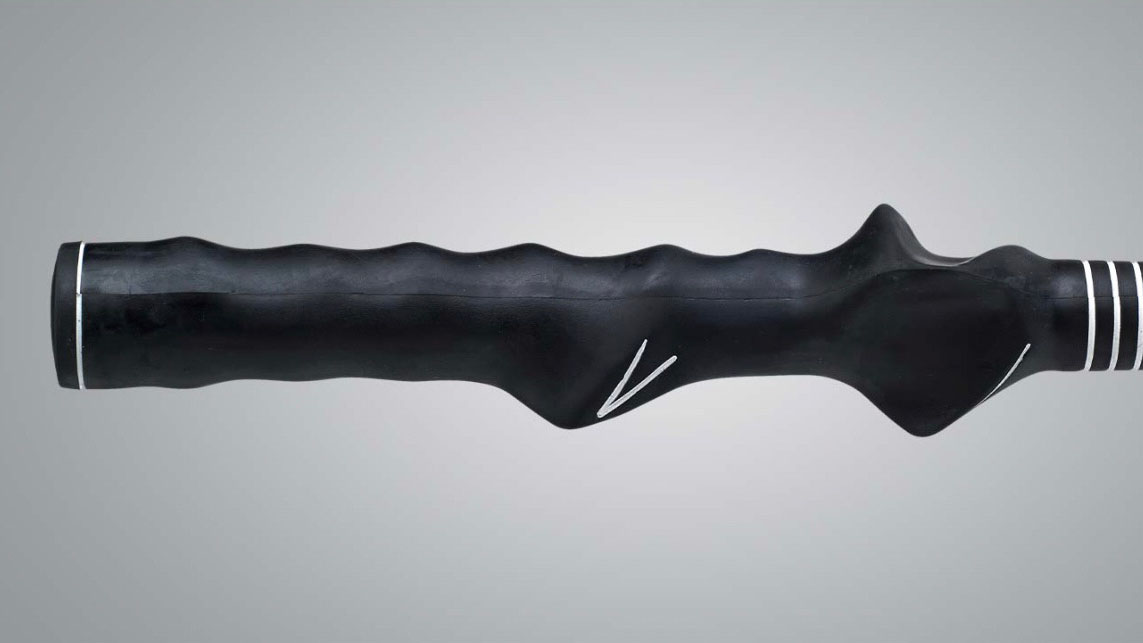
A good way to ensure consistent set up habits is to use alignment sticks or clubs to create a station for your practice. You can do this in a number of ways, but my preferred station is to set one stick just outside my ball parallel to the target line.
This gives me a good reference point for both club face alignment and swing path. For the second part of my station, I place another club parallel to my target along my toe line to ensure correct alignment of my feet. The final part is a third club or stick placed perpendicular to my toe line stick, which highlights my ball position.
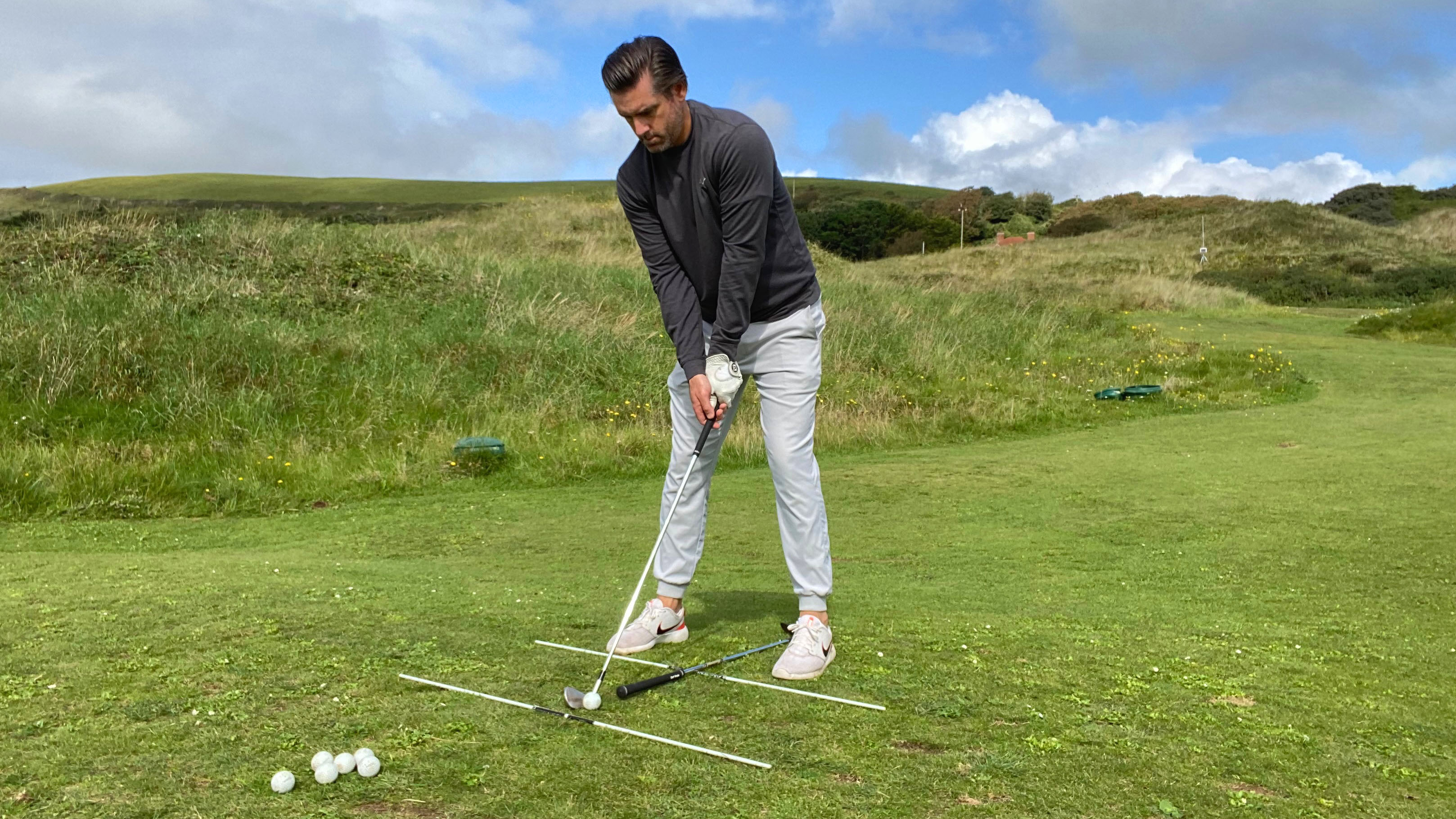
Using a set-up station reinforces good habits
Make some time to recalibrate these fundamentals and these will form the foundation of a solid, consistent game moving forward.
Get the Golf Monthly Newsletter
Subscribe to the Golf Monthly newsletter to stay up to date with all the latest tour news, equipment news, reviews, head-to-heads and buyer’s guides from our team of experienced experts.
Block Practice vs Variable Practice
If you haven’t heard these terms before, block practice is simply when you perform a single skill over and over where repetition is the main focus. For example, standing on the driving range with one club, hitting to the same target again and again would be block practice. Variable practice, as you would imagine, is practice with more variety. Whether you are varying clubs, targets, lies, or trajectories, this type of practice is designed to replicate real situations more closely.
Both of these types of practice have their place. Block practice is very useful for example when making a swing change where the repetition is crucial to embed any changes, whereas variable practice is much more useful from a performance perspective, promoting more creativity and adaptability to real on course scenarios.
Efficient practisers will incorporate both styles, depending on what they are looking to achieve from a session. Simply being aware of these two styles and what you want to achieve may be beneficial to you when planning a practice session.
I like to incorporate both block and variable practice particularly in my putting practice. For my block practice I always start my putting sessions with some set-up work using alignment sticks and/or clubs. This helps me ensure good face and body alignment, constant ball position and provides a good reference for the path of my putting stroke.
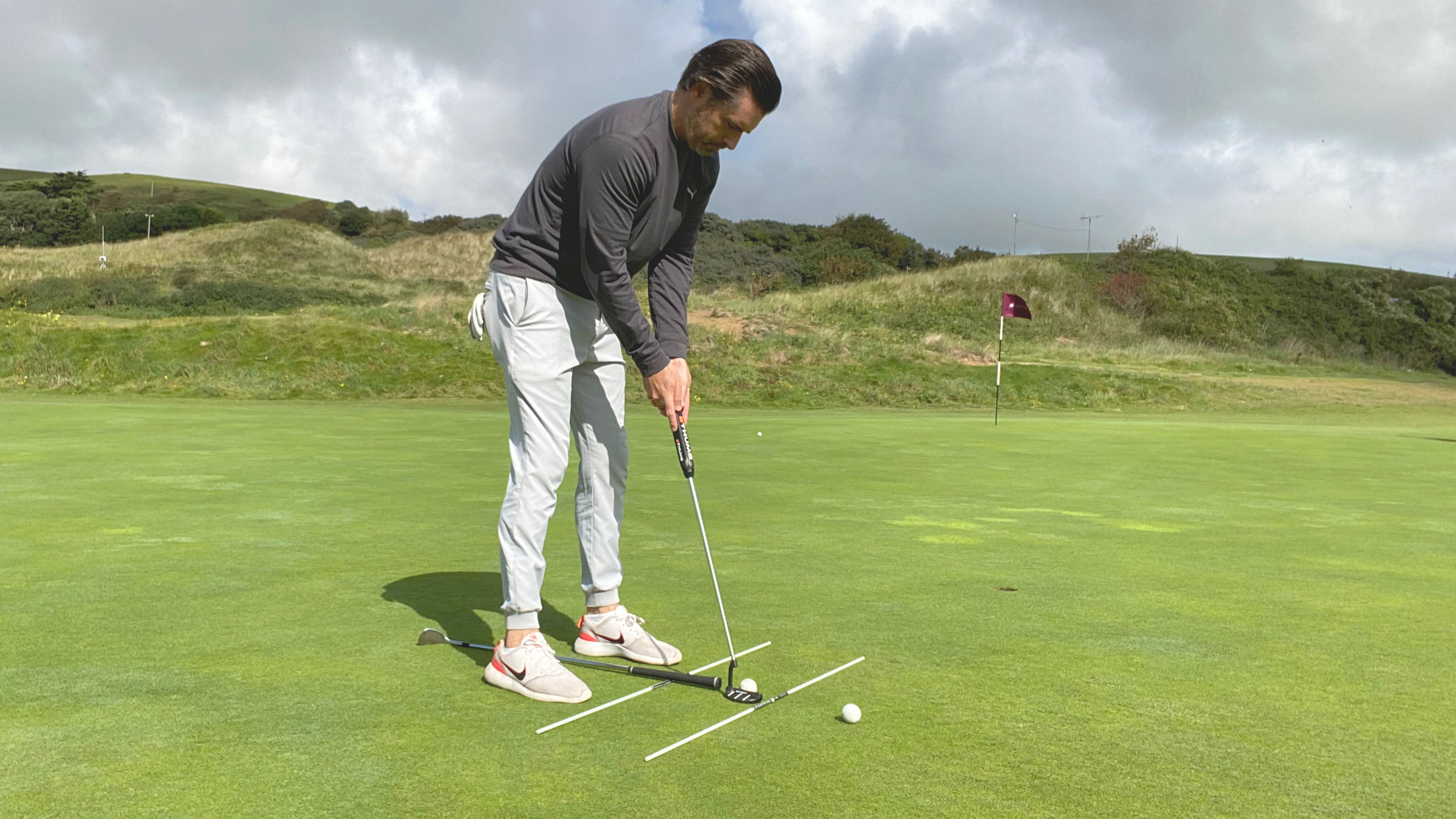
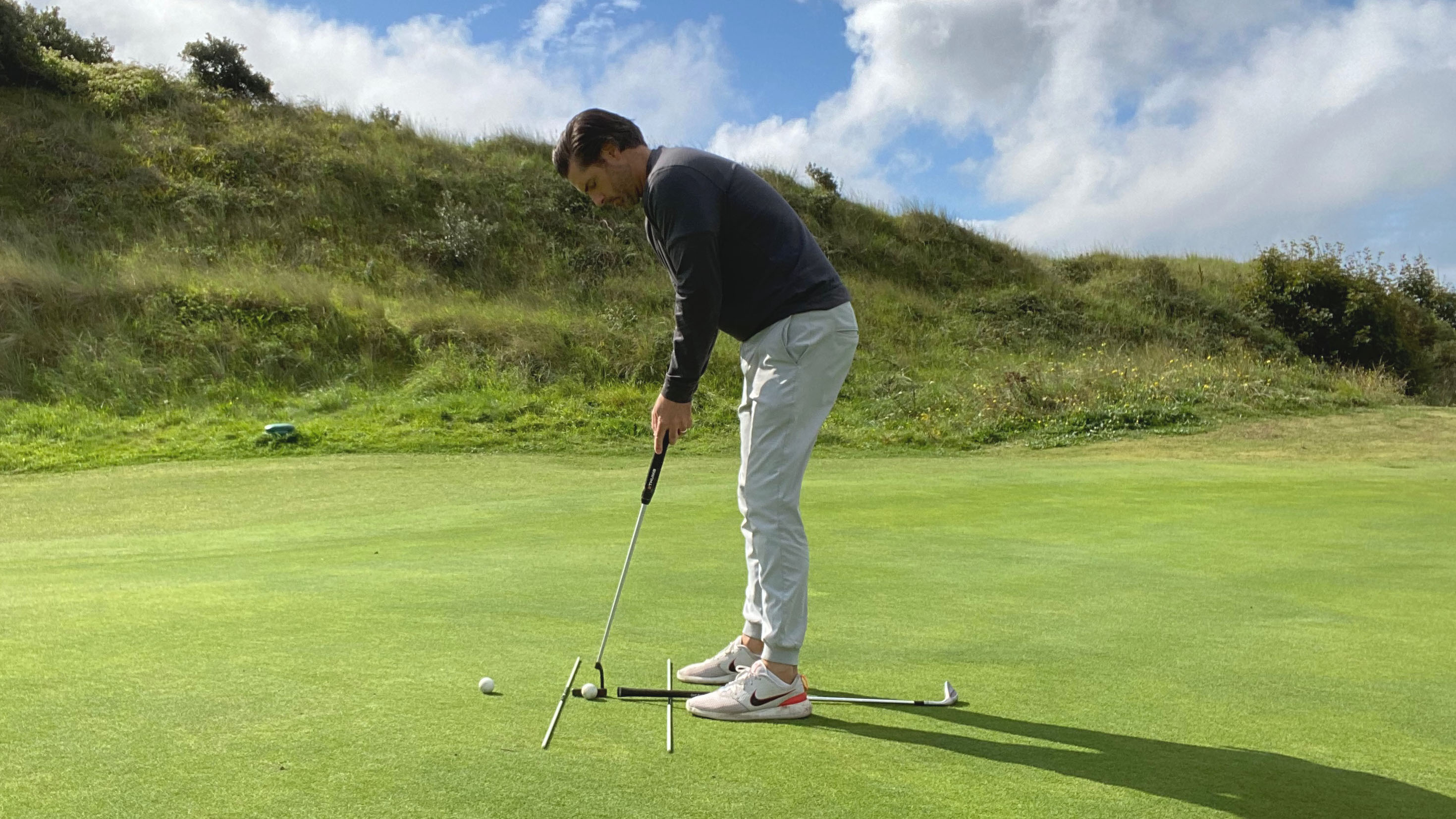
Once I am happy that these fundamentals have been calibrated I will move on to some variable practice. This generally simply entails putting around the practise green varying the lengths and breaks of putt, much as you would experience out on the golf course.
Course vs Practice Ground
How much time you spend on the course versus the practice ground can be the defining factor in your style of play. As a PGA Professional, I play many Pro-am events and have come across numerous players possessing picture perfect, textbook golf swings and crisp ball striking ability who score very poorly because they simply have very little idea of how to navigate their way around a golf course.
Contrastingly, I know many players with very agricultural golf swings and relatively poor ball striking but who seem to produce consistently low scores. This is often down to the time these players attribute to the course versus the practice ground.
Whilst there is absolutely merit in building a sound, reliable golf swing through repetition on the driving range, this doesn’t always necessarily equate to lower scores.
Many professionals over the years have stated that they had become too caught up in the pursuit of technical excellence and ended up “playing swing” rather than “playing golf” resulting in a loss of form. In truth, there are many unquantifiable requirements to shooting low scores far beyond simply striking good golf shots, that can only really be learned through time and experience on the course.
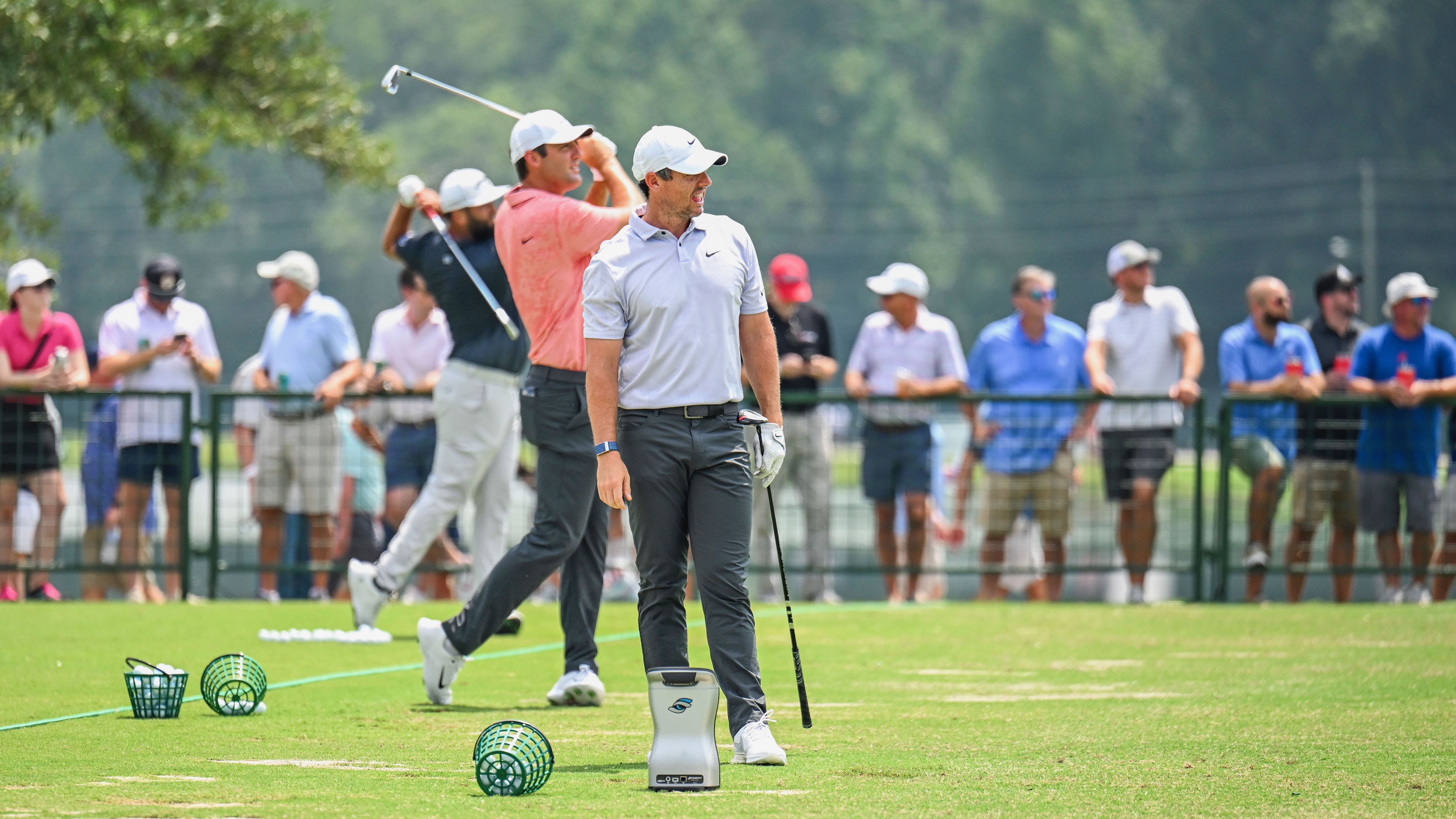
Top players will split their practice time between the driving range and the golf course
Playing with consequence is one of those requirements. For example, striping a driver down a wide open driving range is a lot easier than doing so on a long, tight par four with water right, out of bounds left, with a scorecard in your pocket. It is the exact same skill, but human nature complicates things.
Shot selection and timing are other elements. Just because you can pull a shot off, it doesn’t necessarily mean you should. At certain points of a round, consolidating by aiming for the middle of a green rather than a flag, or chipping out of the trees as opposed to trying the miracle escape are prudent scoring strategies and again only come through learned experience.
A combination of sound physical skill set, along with a high golfing IQ is probably the ideal scenario here. Weigh up where you sit on this scale and consider adjusting your practice time accordingly. I have a couple of fun ways to work on my on course capabilities.
The first one is, if I can get out for a few holes on my own I like to play two balls, draw against fade to help my shot shaping. Another game I like to play is “worst ball”. This again involves hitting two balls each time, but you always hit your next shot from the worst position of your previous two.
This helps to train your recovery skills and will make your next round feel like a breeze!
Short Game vs Long Game Practice
Whether we like it or not, the facts are that approximately 65% of shots during a round take place from within 100 yards of the green. As such, logic would dictate that 65% of our practice time should be spent on shots of 100 yards or less.
Unfortunately, for many people, smashing drivers down the range is a much more enjoyable task than practising bump and runs from the fringe or clipping 50 yard pitch shots. That’s absolutely fine if pure enjoyment is your goal, smash away! However, if you are serious about lowering your scores, you need to optimise your approach to practise.
Using that percentage scale here is a useful exercise. If you have 5 hours to practise in a week or even a month, dedicate at least 3 of those to your short game and watch your scoring improve.
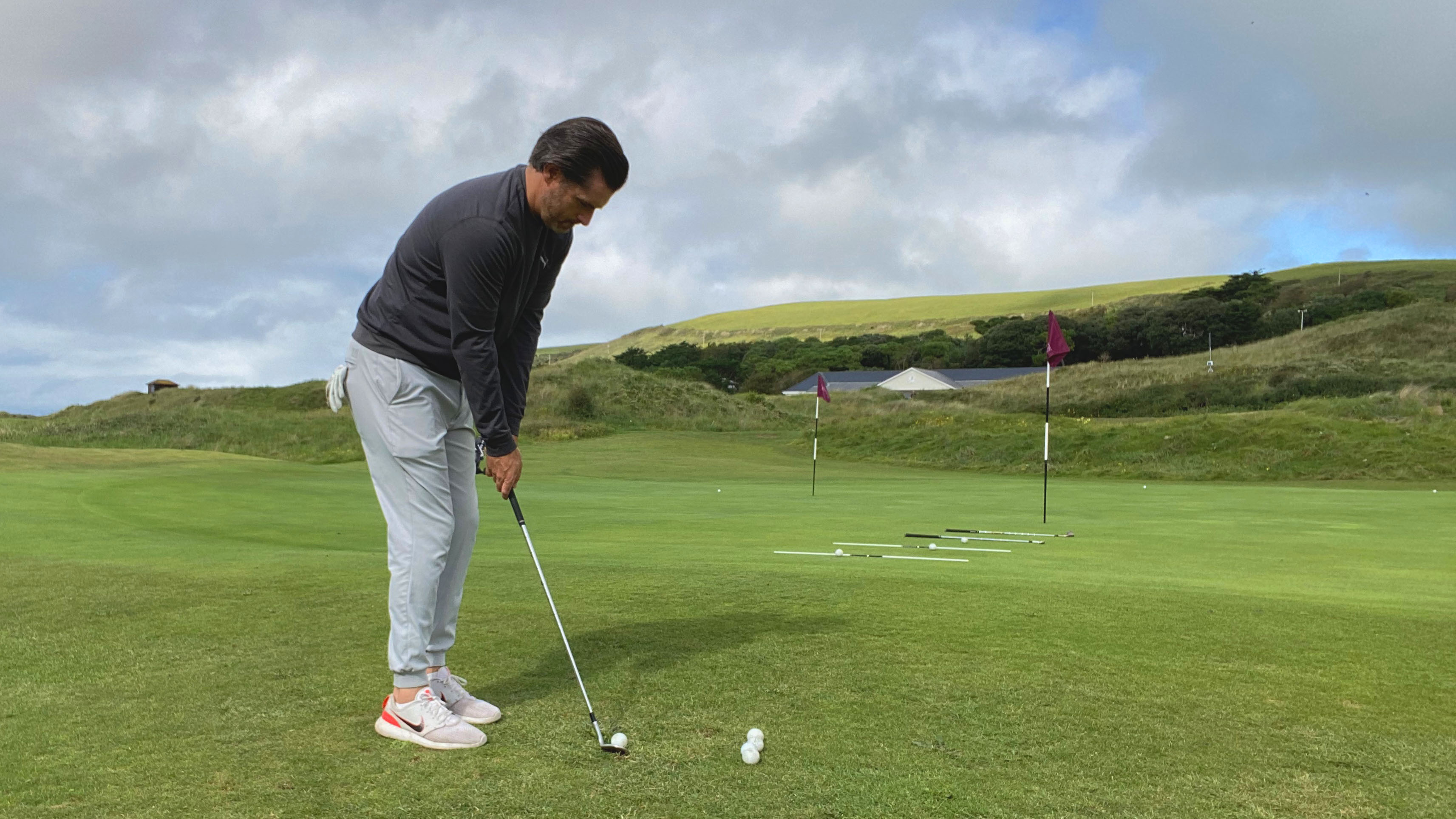
Using the ladder drill will improve your distance control with chipping and pitching
One of my favourite short game drills is the ladder drill for chipping. Place three or four clubs down on the ground perpendicular to you about a yard apart creating a ladder that is working away from you.
Then, from whatever distance you choose, grab your practice balls and practice landing your shots in each gap between the rungs. Start with the first rung and move up the ladder and back down. This will really sharpen your ability to hit your landing spots when chipping.
Practise Your Mental Game
Practise in golf is a term that is only really synonymous with the physical side of the game. I mean, how do you practise thinking right? Well the truth is there are a number of things that many better players do to help their mental game away from the course.
Visualisation is a very powerful tool that a lot of low handicap players use to help prepare them for a round of golf. It can be used in a couple of ways. Firstly, many low handicap players will take a quiet few minutes before a round, often even the night before to mentally rehearse their round in order to help prepare and familiarise them with what they are about to face.
This can help many players feel less stressed during a round, in the knowledge that they have covered this ground mentally before.
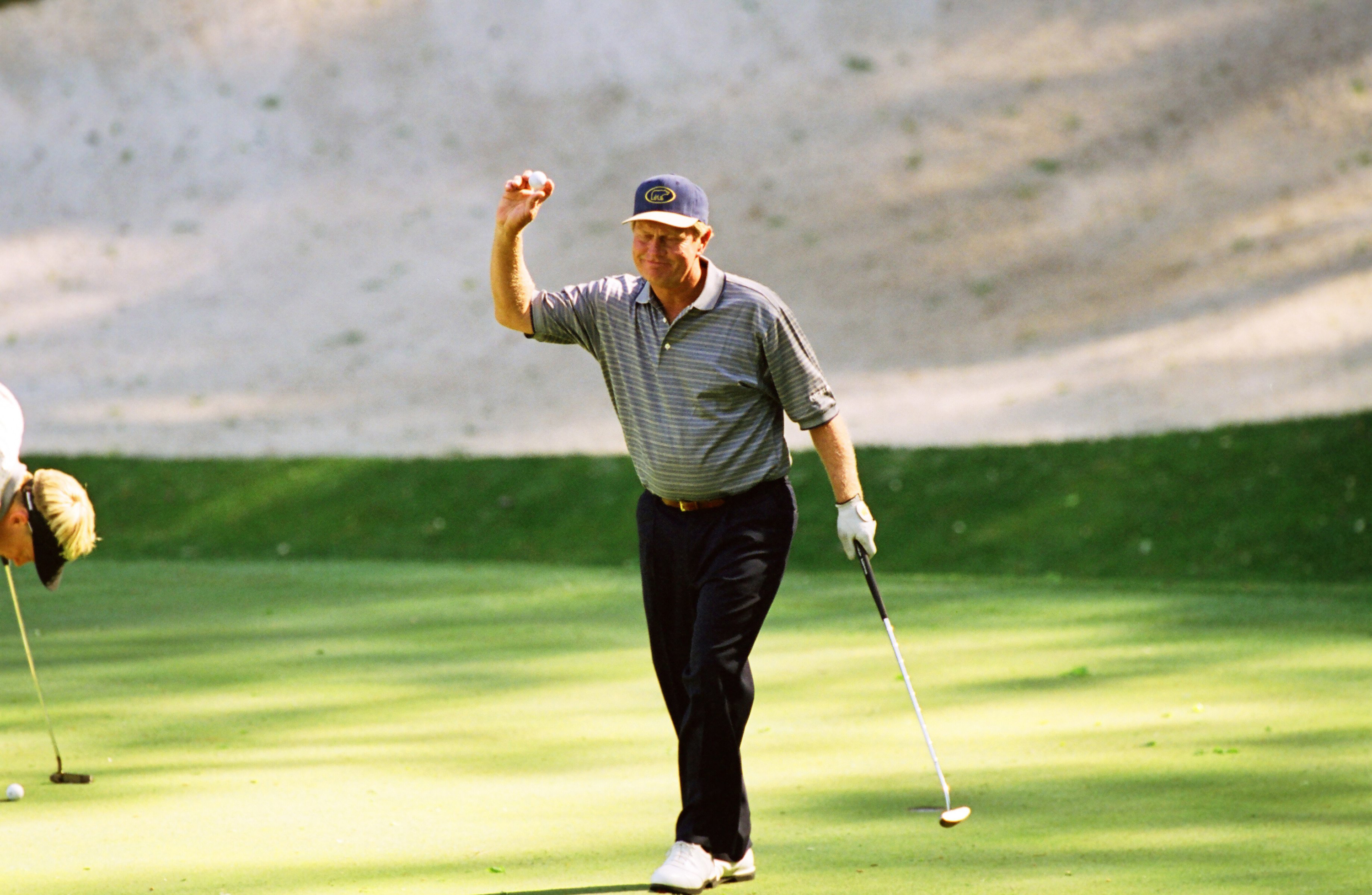
Jack Nicklaus used visualisation throughout his career
Secondly, visualisation directly prior to a shot can be massively helpful to feed your brain with the correct information to send to your body. If your brain has a very clear image of what it is trying to produce, this information is more easily transmitted to the body.
Jack Nicklaus for example said that he used to “watch a movie” of every shot in his mind before hitting it. This would include seeing the start direction, trajectory and curvature of the shot. Australian, former world number one Jason Day even steps behind the ball and closes his eyes for a few seconds in order to get a very clear visual in his mind of his intended shot. Visualisation is very practicable.
Try mentally playing your round the night before your next game or even using Jack's movie method at your next range session.

Joe has worked in the golf industry for nearly 20 years in a variety of roles. After a successful amateur career being involved in England squads at every age group, Joe completed his PGA degree qualification in 2014 as one of the top ten graduates in his training year and subsequently went on to become Head PGA Professional at Ryder Cup venue The Celtic Manor Resort. Equipment has always been a huge passion of Joe’s, and during his time at Celtic Manor, he headed up the National Fitting Centres for both Titleist and Taylormade. He’s excited to bring his knowledge of hardware to Golf Monthly in the form of equipment reviews and buying advice.
Joe lives in North Devon and still plays sporadically on the PGA West region circuit. His best round in recent years came earlier in 2023 where he managed a 9 under par 63 at Trevose GC in a Devon & Cornwall PGA Tournament.
Joe's current What's In The Bag?
Driver: Switch between TaylorMade Qi35 and Callaway Elyte TD - both with Fujikura Ventus Black 6-X
Fairway wood 1: TaylorMade BRNR Copper Mini Driver - Fujikura Ventus Black 7-X
Fairway wood 2: Callaway Apex UW 17˚- Fujikura Ventus Black 9-X
Irons: TaylorMade P7CB 3-PW with Dynamic Gold Tour Issue X100 shafts
Wedges: Callaway Opus 50, 54, and 60 degrees - Project X LS 6.0 shafts
Putter: LAB Golf Oz.1 (zero shaft lean)
Ball: TaylorMade 2024 TP5x
Grips: Golf Pride Tour Velvet 60R
Bag: Vessel Player IV Pro DXR Stand
-
 JM Eagle LA Championship Prize Money Payout 2025
JM Eagle LA Championship Prize Money Payout 2025The LPGA Tour heads to California for the JM Eagle LA Championship, where the largest prize money payout of the season so far is on the table
By Mike Hall
-
 Corales Puntacana Championship Prize Money Payout 2025
Corales Puntacana Championship Prize Money Payout 2025The PGA Tour’s latest opposite field event features an attractive prize money payout and some former champions in the field
By Mike Hall